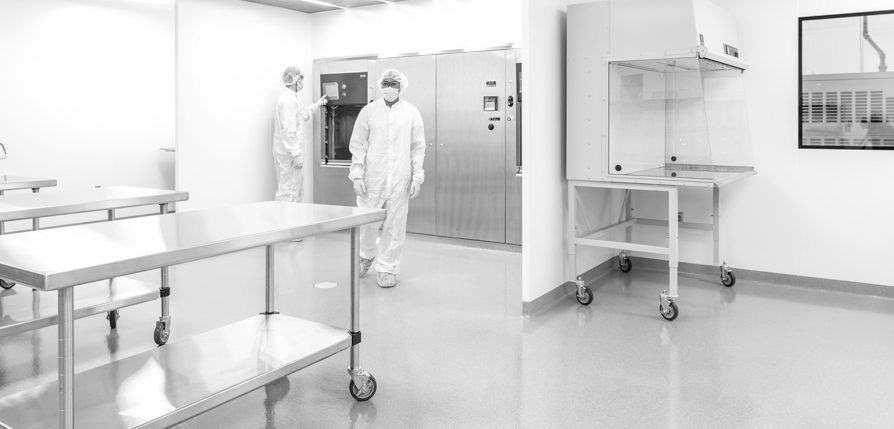Process Technologies
At the core of the sterile manufacturing operation, process technology drives the ability to safely, efficiently and repeatedly produce sterile products. Early developments of sterile manufacturing facilities were centered on the (at times open) aseptic processing in a cleanroom environment, with personnel in the critical work area. This approach created risk of particulate and bioburden contamination. Thus, as sterile manufacturing technologies and practices developed, the drive to close the process and separate the critical manufacturing environment from personnel became a key driver in the development of the core process technology.
Today, the most commonly prescribed approach is to close the manufacturing process and locate it behind a fully contained ISO 5 isolator system in an ISO 7 or ISO 8 background cleanroom environment. In contrast, when the ISO 5 zone is open to the surrounding environment, the background environment is commonly designed to meet ISO 5 or ISO 6, thus increasing the complexity and management of materials and personnel in this condition.

Process Equipment
Sterile manufacturing operations are rigorously scrutinized for integrity and consistency to maintain patient safety. Accordingly, process equipment supporting or controlling sterile operations is designed to meet strict regulatory guidelines and design requirements.
Major design considerations in process equipment include:
- Operability and ergonomics
- Cleanability of the system automatic
- Ability to sterilize the system
- Drainability
- Smooth, hard and crevice-free finishes of all product contact surfaces
- Fully controllable, consistent and repeatable functions manual or closed versus open process systems
- Ability to control the manufacturing environment to a prescribed level
Key Unique Aspects of Manufacturing Cleanrooms:
• Highly controlled process and room environments, equal to Grade A/Class A/ISO 05
• Uni-directional flow of materials and personnel
• Highly sophisticated and controlled sterile/aseptic filling systems
• Cleaning-in-place (CIP)
• Steam-in-place (SIP)
• More complex equipment/component preparation systems
• More intensive utilities and HVAC systems
AES designers work as a team with our cleanroom construction personnel to deliver a cost-effective project, while maximizing performance, value and constructability. The greatest client value is delivered when AES is brought onto the team at the inception of the project. This allows the AES professionals the key factors that impact the infrastructure design of the host building surrounding the clean space. This early design integration ultimately saves design “soft costs”, expedites schedule, and eliminates a duplication of services.
